From the May 2022 issue of Apollo. Preview and subscribe here.
Early on in this choice exhibition of works by Louis-Léopold Boilly (1761–1845) at the Musée Cognacq-Jay in Paris is a small image that encapsulates much about this skilled, quirky and unclassifiable painter. In Self-portrait as a Sans-Culotte (c. 1793), the artist shows himself adopting the character of a man of the people – pipe in mouth, disdainful expression, dishevelled hair and clothes, and a tricolour cockade pinned to his rakishly-tilted bicorne hat.
Why did Boilly paint the picture and what exactly is it? At the time he made it, the French Revolution was at its most febrile: the Parisian sans-culottes were a dangerous weapon wielded by the Committee of Public Safety, and the Reign of Terror and the life of Maximilien Robespierre still had a year to run. In the picture – part tronie, part tête d’expression, part caricature – Boilly appears to mock both himself and the populace. As the guillotine was busily lopping heads, Boilly suggests he nevertheless found it hard to take these dangerous times entirely seriously.
However, he would soon have cause to revise his opinion. Probably shortly after he painted the self-portrait, a fellow artist, Jean-Baptiste Wicar, took issue with some of Boilly’s titillating cabinet pictures that bore the stamp of ancien régime decadence and accused him of making paintings that ‘dirty the walls of the Republic’. The painter was arraigned before the Revolutionary government’s Société Populaire et Républicaine des Arts. It was a moment of real danger – Hubert Robert, another artist of suspect loyalties, was at that moment in prison and expecting execution – but Boilly exonerated himself by producing the teeming The Triumph of Marat (1794), a picture that suggested unimpeachable allegiances. It helped too that the Marat was clearly based on the committed radical Jacques-Louis David’s drawing of The Tennis Court Oath (1791).
Boilly, who was born as one revolution started to build and died as another was about to break, was neither a revolutionary nor counter revolutionary but, as evidenced by ‘Boilly: Parisian Chronicles’, a witness who viewed his times from the edge of the crowd, looking on with a quizzical and amused eye as society changed in front of him. His interest was in people rather than ideals and although his paintings have similarities with Hogarth’s depictions of London life, and with Thomas Rowlandson and James Gillray, there is little overt satire in his work. Indeed the painter who resembles him most is William Powell Frith, whose Derby Day (1858) and The Railway Station (1862) show the same fascination with the innumerable little human dramas of quotidian life.
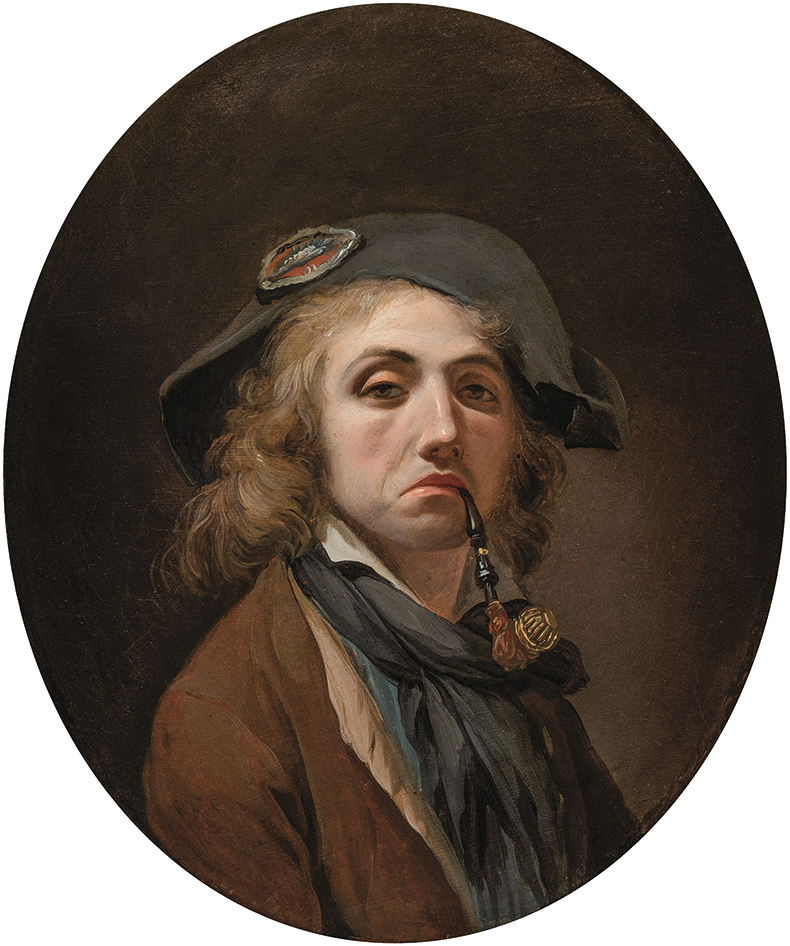
Self-portrait as a Sans-Coulotte (c. 1793), Louis-Leopold Boilly. Private collection Photo: ⓒ Guillaume Benoît
Boilly was not himself a Parisian but was born near Lille and, self-taught and specialising in portraits, arrived in the capital in 1785. Initially he painted mildly licentious boudoir scenes in the tradition of Fragonard and Boucher, the paintings that were to get him into trouble; four are included in the exhibition, wittily hanging in a room with a four-poster bed from the museum’s permanent collection, and show his ability not just as a painter of suggestively creamy flesh and roseate nipples but of fabrics and immaculate still-life details in the tradition of the Dutch fijnschilders of the 17th century.
His run-in with the authorities put an end to this strand of his work and he concentrated instead on pictures for the wider market. He was aided in that in 1791, the National Assembly removed control of the Salon from the Academy and opened it to all artists, and Boilly was astute in using this as an opportunity. In 1798 he exhibited Réunion d’artistes dans l’atelier d’Isabey, a frieze-like composition of 31 artists and architects of the new generation – from Prud’hon and Carle Vernet to Anne-Louis Girodet and Boilly himself – and it made his name. It fills a room in the museum, while at the Salon, one critic reported that: ‘The crowd lays siege to this picture.’
In 1800, Boilly followed this success with Un trompe-l’oeil, a painting mimicking a framed collection of prints, drawings and assorted papers, covered by a sheet of broken glass. It was the first time the phrase trompe-l’oeil had been used in the context and came to define the whole genre. It was something at which Boilly excelled and the exhibition includes several examples of his preternatural skill. Among them is a near blasphemous painting of a small ivory crucified Christ on a wooden cross (1812), supposedly hanging on a wall. Stuck to that fictive wall, however, is a scrap of paper with Boilly’s name and address written on it (12, rue Meslée), so Christ is in effect no more than an advertisement of the painter’s skill.
That facility was impressive enough for some 5,000 Parisians to turn up at the rue Meslée and sit for their portrait. They share the same small head and shoulders format (22 x 16 cm) and, Boilly claimed, ‘I do these in two hours, they’re 120 francs.’ A phalanx of 40 of these ‘portraits de poche’ of the bourgeoisie are squeezed into a corridor in the museum facing a wall of his humorous lithographs of expressive faces – gurning, leering, laughing – so the visitor feels part of a noisy throng.
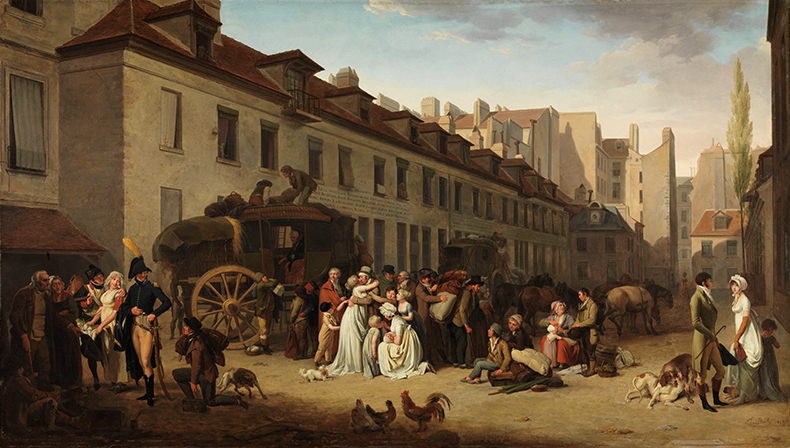
L’arrivé d’une diligence dans la cour des Messageries (1803), Louis-Léopold Boilly. Photo: © 2015 RMN-Grand Palais (musée du Louvre)/Philippe Fuzeau
It was, however, in his real crowd scenes that Boilly’s gifts for observation came to fruition. In a series of detailed snapshots – tableaux – he recorded life around the boulevards. In L’arrivée d’une diligence dans la cour des Messageries (1803) – the first of his works to be bought by a public collection, in 1845 – he showed the tender embraces of a family reuniting at a bustling coach stop; elsewhere it is the drunken scramble for a tankard of free wine, the jostling on the edge of violence outside a theatre, card players at a cafe, or revellers at a carnival. Every part of each canvas is filled with figures, animals and diverting detail that Boilly perfected in numerous oil studies. He may have painted the surge, milling and sometimes the madness of crowds but the spontaneity was thought through and stilled in every particular first. And as Honoré de Balzac did with his contemporaneous La Comédie humaine, Boilly, the committed people-watcher, makes willing flâneurs of us all.
‘Boilly: Parisian Chronicles (1761–1845)’ is at the Musée Cognacq-Jay, Paris, until 26 June.
From the May 2022 issue of Apollo. Preview and subscribe here.
Unlimited access from just $16 every 3 months
Subscribe to get unlimited and exclusive access to the top art stories, interviews and exhibition reviews.


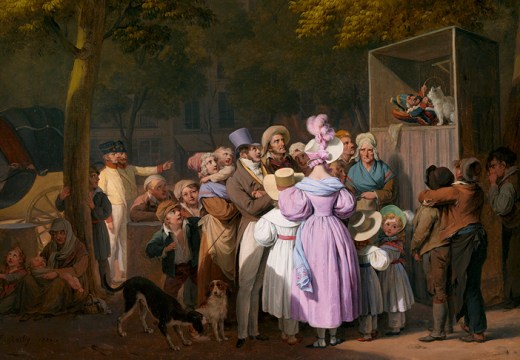
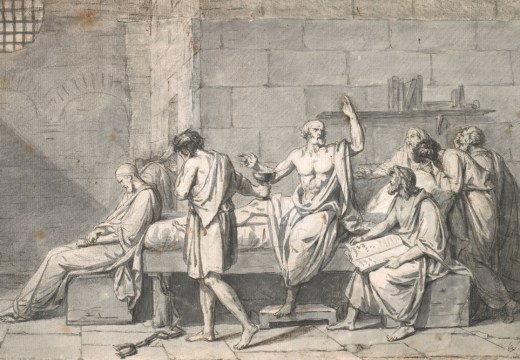
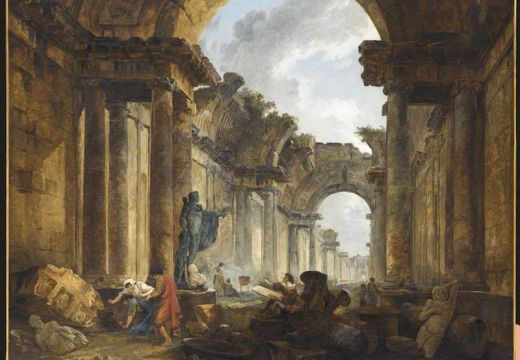









![Masterpiece [Re]discovery 2022. Photo: Ben Fisher Photography, courtesy of Masterpiece London](http://www.apollo-magazine.com/wp-content/uploads/2022/07/MPL2022_4263.jpg)
It’s time for the government of London to return to its rightful home